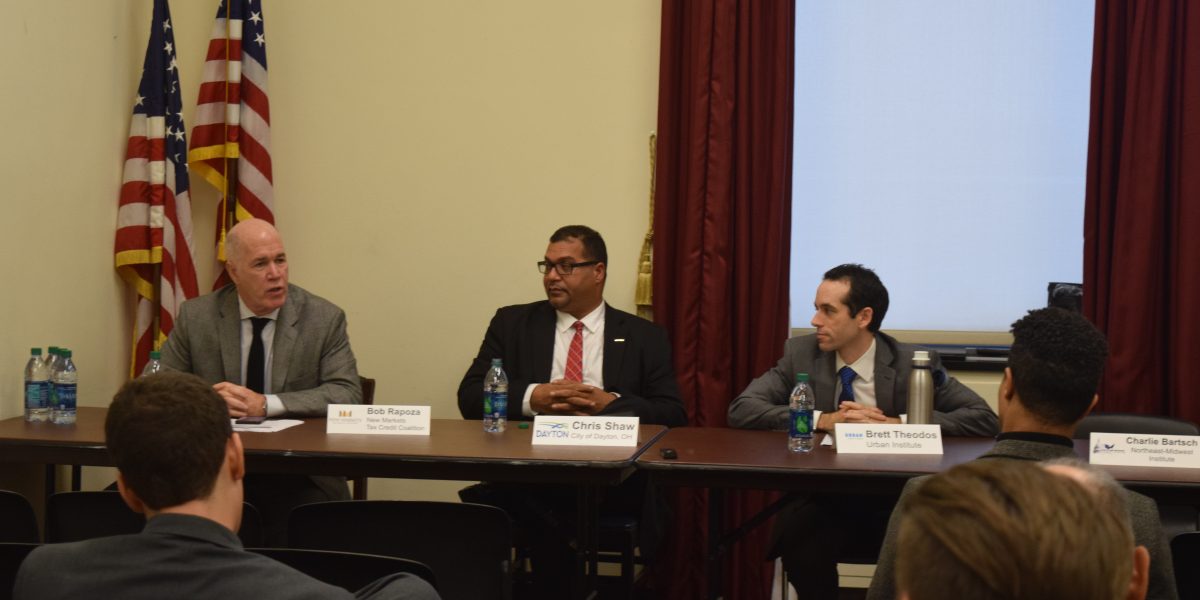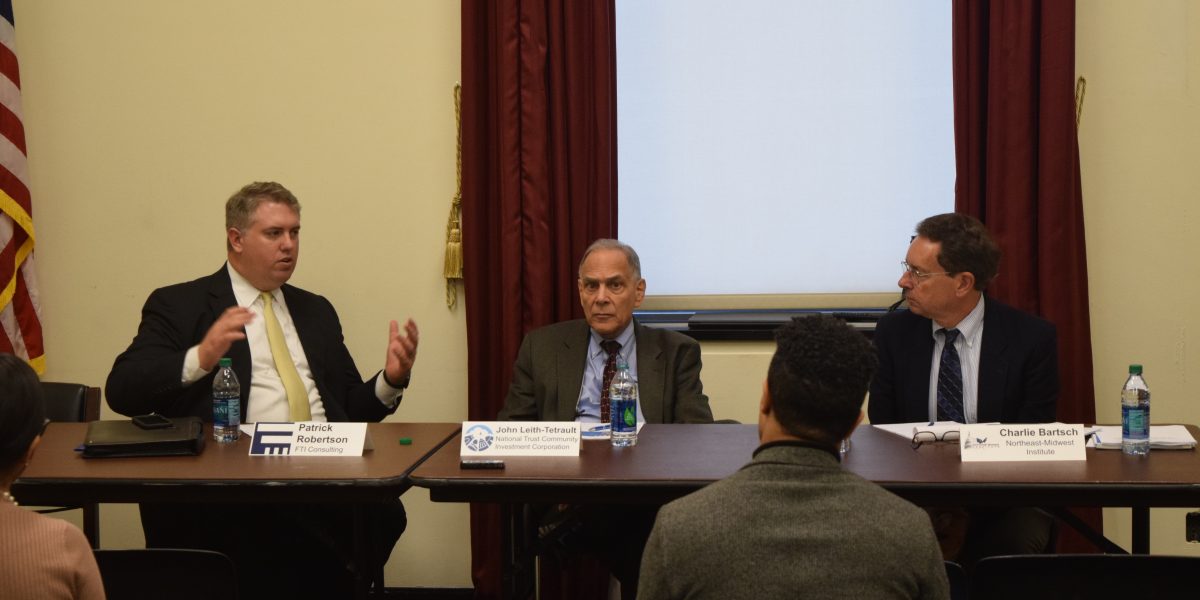The impact of the New Markets Tax Credit and Historic Tax Credit Programs on urban economic development was the subject of Northeast-Midwest Institute back-to-back policy briefings to Congressional staffers on November 7. Panelists warned that ending these tax credits would stifle investment and economic development, especially in distressed areas facing numerous barriers to revitalization.
The Tax Cuts and Jobs Act, the House tax reform bill, stipulates that the New Market Tax Credit and Historic Tax Credit Programs will expire on December 31st, 2017 and July 1st, 2018, respectively. Both programs attract significant private capital, typically to finance projects in neglected or underserved communities across the country. These programs have spurred creation of hundreds of thousands of jobs and generated billions in local, state, and federal tax revenues.
A full, time-stamped audio recording of the New Markets Tax Credit briefing can be found here. The audio for the Historic Tax Credit briefing can be found here.
The slides used during the New Markets Tax Credit briefing can be found here. The Historical Tax Credit presentation slides can be found here.
Brett Theodos, Senior Research Associate at the Urban Institute, provided data from UI’s extensive analysis of NMTCs that illustrated the breadth and depth of the impacts of this incentive and its role in mission lending.
City of Dayton (OH) Commissioner Christopher Shaw called New Market Tax Credits a “critical, transformational tool” for growing Dayton’s economy and boosting Main Street. Shaw noted that several NMTC projects such as the Premier Health Center, the Children’s CARE House and Tech Town not only create jobs but they provide other growth opportunities for Dayton. Commissioner Shaw concluded by warning that “without these credits many investors will simply slam the brakes” on development projects.
Bob Rapoza, head of the New Markets Tax Credit Coalition, re-iterated Shaw’s assessment on a larger scale, calling NMTCs a “vital part of economic development packaging, a job driver,” citing the 450,000+ jobs created in the 2,244 NMTC projects carried out in the Northeast-Midwest region since the credit’s enactment in 2000.
John Leith-Tetrault, Chairman of the Historic Tax Credit Coalition, echoed Commissioner Shaw’s assessment on the transformative effect these tax credits can have on local communities. Tetrault called the HTC a “catalytic credit” that attracts future development due to the increase in property values and neighborhood confidence.
Patrick Robertson, Managing Director at FTI Consulting, explained that without these credits historic rehabilitation projects become less attractive to developers who will be unable to bridge the funding gap between cost and capital.
This briefing was hosted by the Revitalizing Older Cities Program at the Northeast-Midwest Institute. Many of the Northeast-Midwest region’s cities—historic and current centers of industry, transportation, and American ingenuity—have suffered dramatic reductions in population, employment opportunities, and economic investment. The majority of our nation’s most economically-challenged older industrial cities are concentrated in the Northeast-Midwest region. The Revitalizing Older Cities Program works to identify critical policy needs and support solutions to shared problems in the region’s cities.
The Northeast-Midwest Institute is a Washington, D.C.-based, nonprofit, nonpartisan public policy organization committed to economic vitality, environmental quality, and regional equity for the 18 states of the Northeast and Midwest.

